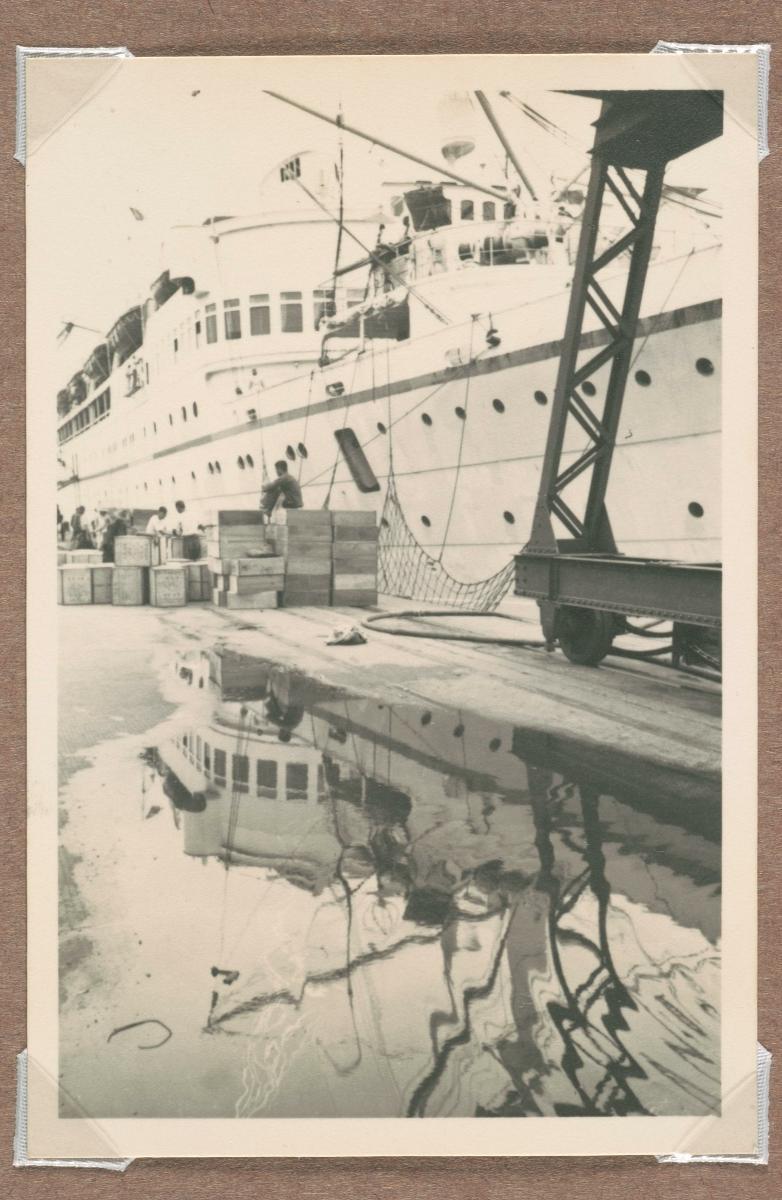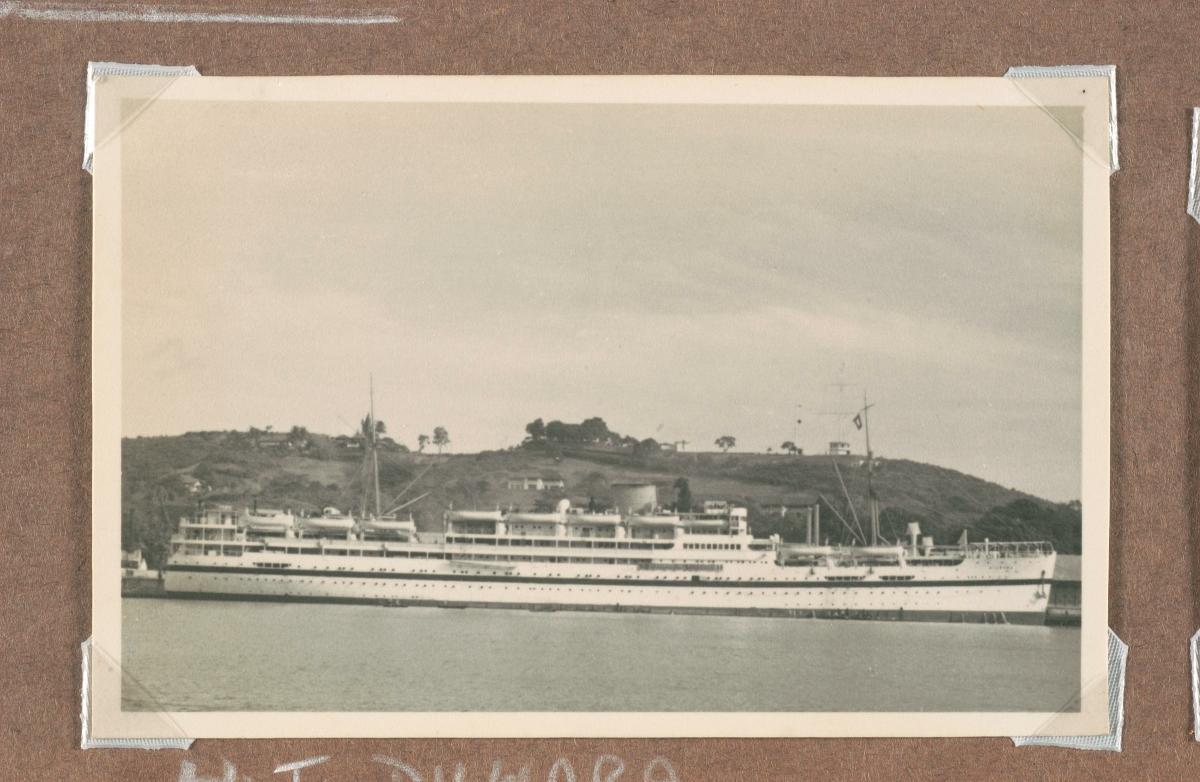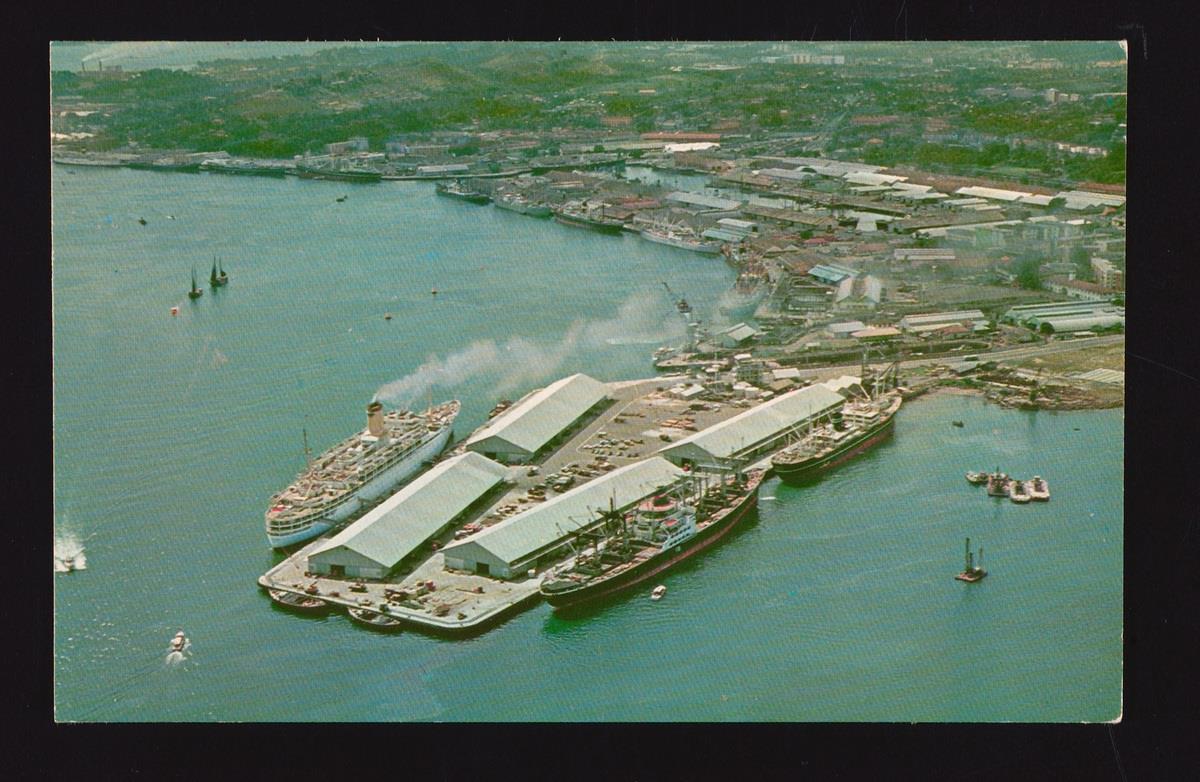Frame size: 10.9 x 7.2 cm
The diesel engine emerged in the 1910s as an alternative to steam-driven propulsion systems for ocean-going vessels, with the Dutch East Asiatic Company, in particular, commissioning the diesel-powered, 5000-tonne Selandia in 1912. However, it was only after the First World War that diesel-driven motor vessels started to seriously challenge steamships as the dominant mode of sea transportation. Nevertheless, steamers, especially the newer turbine-driven models, continued to be built and operated in substantial numbers in the 1920s as the considerable capital costs involved in building diesel engines coupled with high oil prices prolonged the period of transition from steam to diesel.

















